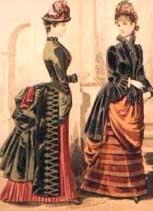
For the last seven years there is an old stone mansion near us that has been in the local news and, currently, in the process of being renovated.
Why was it in the local news? Well, it started with the old stone mansion being torn down and sold and replaced with several new houses.
It was such a shame as this old stone mansion was built in 1847 and had quite the history associated with it regarding the town and even one of the presidents.
In 2014 a group of teenagers heard about this old mansion being torn down and decided to do something about it. They decided to protest the demolition of the mansion and used all their social media skills to help them with protesting it.
They created signs and stood outside the mansion waving their signs for motorists passing by, created online petitions, and posted where ever they could online to educate the community about what was going on with the demolish of this mansion and why it shouldn't be demolished.
Their efforts quickly spread throughout the community and many residents joined in on the protest.
Well, as you can imagine, several weeks into the protest the current owner changed his mind and decided not to sell the property. After that several groups concerned with historic preservation got involved with the end result being the residents approving utilizing funds to help preserve the mansion at their town meeting.
In 2016 after weeks of discussions the owner and town had an agreement on preserving the mansion and renovating it.
So, for the last few years we have been watching the meticulous and amazing process of renovating this historic property. Every day we drive by it and marvel at the workmanship involved with creating this unbelievable mansion to it's original glory. The stone and masonry work involved has been nothing short of astonishing.
The mansion was registered with the Massachusetts Historical Commission in 1999 and, according to the Friends of the Burnett-Garfield House, which worked with the owner and the town to preserve this old mansion, it is considered a historic property for many reasons.
If you're interested in reading about why this house is considered historic please visit their Friends of the Burnett-Garfield House Facebook page.
Well, this past spring when my husband and I were driving by and marveling at the workmanship I decided to take some pictures as I found all of the renovations remarkable and thought you all might agree.
To put all of this in perspective you first need to see how the old mansion looked before they started renovating it.
The property consisted of the old stone mansion, a carriage house, a chapel, and a summer house - all of which would be renovated.
The picture at the beginning of this post shows the renovated chapel, mansion being renovated and part of the carriage house being renovated.
















 I have to wonder sometimes why I have such a fascination or passion for the fashions of the Victorian Era when I am clearly a feminist (the ultimate feminist according to my son-in-law).
I have to wonder sometimes why I have such a fascination or passion for the fashions of the Victorian Era when I am clearly a feminist (the ultimate feminist according to my son-in-law). When I think of a "Lady" either I picture someone like Audrey Hepburns' character in "My Fair Lady" or I picture a Victorian woman like the picture to the left. Someone refined and dignified. Someone who has good manners and who also just happens to be wearing a beautiful Victorian dress. I always seem to get back to the Victorian dresses, don't I? Must be an obsession. Yah think? In my mind, a "Lady" is the ultimate perfect female. But, is she really?
When I think of a "Lady" either I picture someone like Audrey Hepburns' character in "My Fair Lady" or I picture a Victorian woman like the picture to the left. Someone refined and dignified. Someone who has good manners and who also just happens to be wearing a beautiful Victorian dress. I always seem to get back to the Victorian dresses, don't I? Must be an obsession. Yah think? In my mind, a "Lady" is the ultimate perfect female. But, is she really?


















